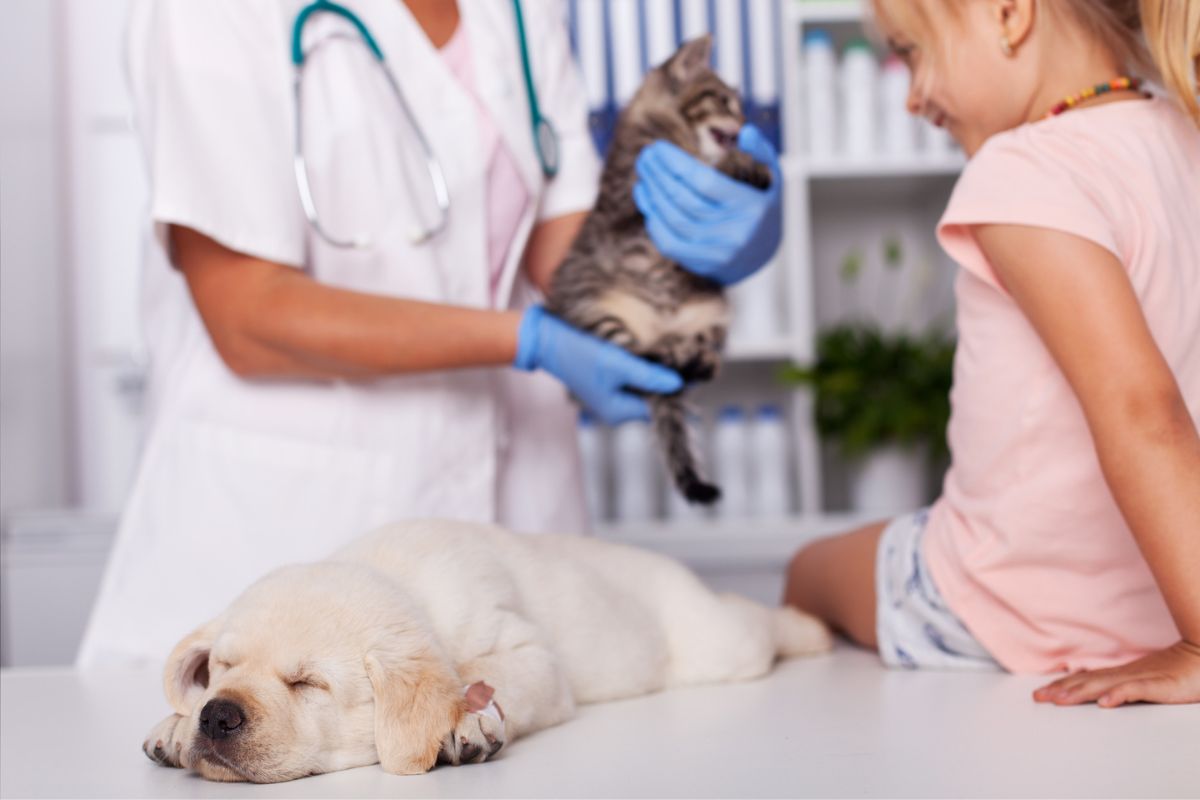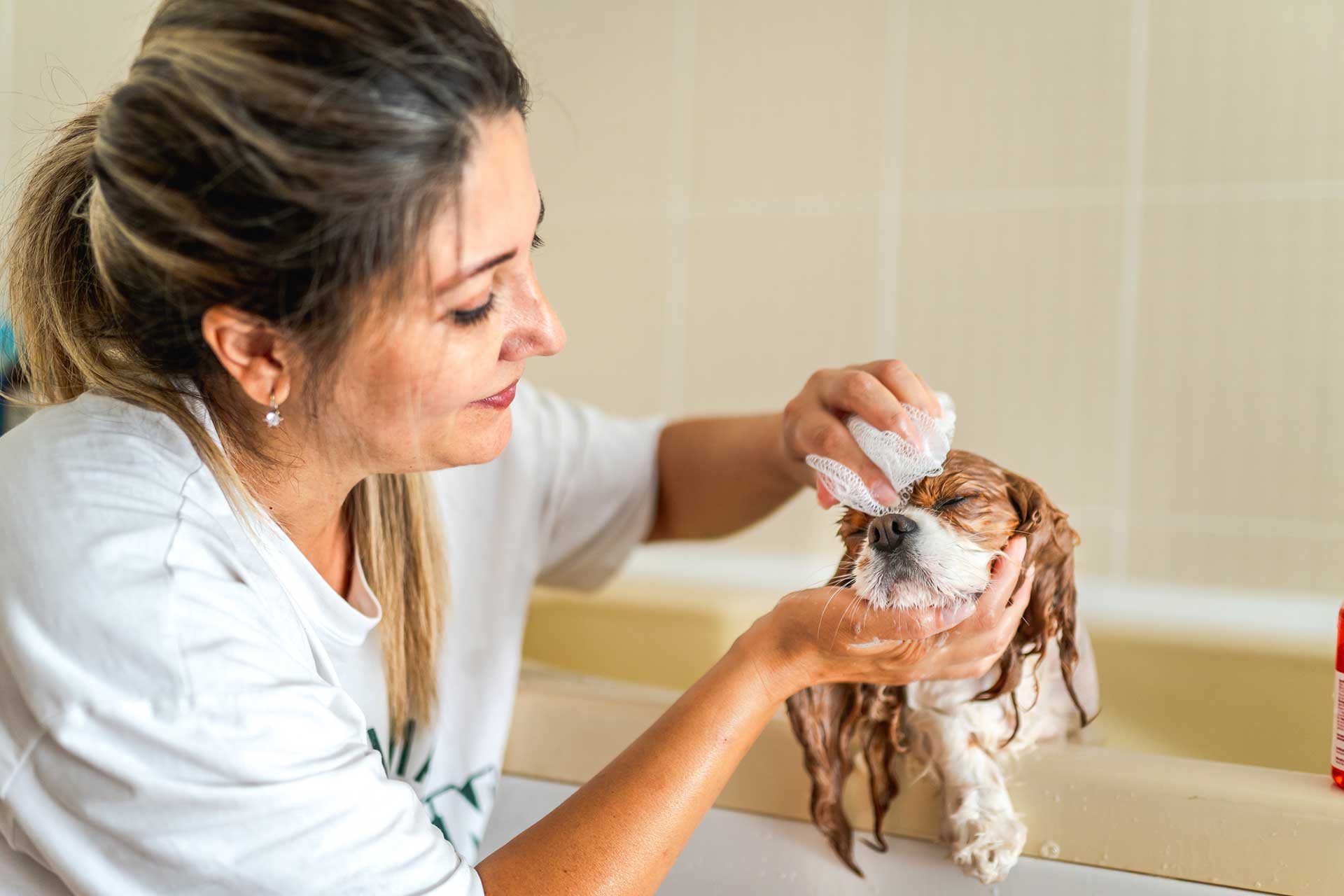Desexing is a common surgical procedure performed under a general anaesthetic by veterinarians. In female cats and dogs, the surgery is called spaying and involves removing the uterus and ovaries. In male cats and dogs, the surgery is called castration and involves removing both testicles. Desexing your pet not only prevents unwanted pregnancies, but it also offers several health and behavioural benefits for your pet. Learn about the recommended age for desexing, the surgery, and post-op care tips for your furry friend.
Recommended age for desexing
Cats are typically desexed between four and six months of age, or once they reach 2kg.
Dogs can be desexed at any age, however the ideal time depends on their breed, size, and health. Desexing prevents unwanted pregnancies, and female dogs that are desexed before their second heat have a significantly reduced risk of mammary cancer and uterine infection.
Smaller dog breeds are often desexed around six months before they reach sexual maturity. The exception is Dachshunds, where new evidence suggests waiting until 12 months of age reduces the risk of spinal disease later in life.
For large breed dogs greater than 20kg, evidence suggests that delaying desexing until maturity (over 12 months of age) may help protect against certain medical conditions. In giant breed dogs, this is often extended until 18-24 months when they reach skeletal maturity.
Talk to your vet to determine the optimal time to desex your pet. Every pet is unique, so it’s important to discuss your and your pet’s circumstances when making this decision.
Benefits of desexing your pet
Health benefits
One of the primary reasons to desex your pet is the health advantages it offers. In females, spaying significantly reduces the risk of uterine infections and breast tumours. For males, castrating helps prevent testicular cancer and reduces the risk of prostate problems.
Behavioural improvements
Desexing can lead to positive behavioural changes in pets. Uncastrated males are often more prone to roaming, marking territory with urine, and aggressive behaviour. Desexing can calm such behaviours, making your pet more focused on their home and less likely to engage in territorial disputes or wander off searching for a mate. Similarly, spayed females are less likely to display behaviours associated with their heat cycles, such as attracting male suitors.
Desexing surgery
Desexing is typically a day procedure. Before the surgery, your pet will undergo a blood test and check-up and receive pain relief. During the surgery, your pet will be put under anaesthesia and operated on in a sterile surgical theatre. The procedure involves making a small incision and removing part of your pet’s reproductive system. Once the surgery is complete, the area is carefully sutured. Throughout the procedure, your pet is monitored by an experienced nursing team who provides support to the operating veterinarian.
After surgery, your pet will moved to the recovery area, where a nurse will carefully monitor your pet and contact you when they’re ready to go home.
Aftercare at home
Caring for your pet at home after desexing is crucial for a smooth recovery. They’ll be groggy and weary post-surgery for the next few hours and even into the next day. Set up a quiet and comfortable space where they can rest and recover. Pets can have trouble regulating their body temperature after surgery, so add a cosy blanket to their bed. Monitor the incision site and ensure it remains clean and dry. Some pets will attempt to lick their wound, which can cause damage. To prevent your pet from irritating the wound or chewing their sutures, your vet will provide you with an ‘Elizabethan collar’. Keeping this collar on is important to help prevent infections and the wound possibly opening.
Follow any instructions given by your vet team regarding medication and check-up appointments. Typically, pets will need a check-up in 3 and 10 days so your vet can check their wound is healing well and remove any sutures.
Limit your pet’s physical activity during the initial recovery period to prevent strain on the surgical site. Monitor their behaviour for signs of distress and offer them extra comfort and attention. Ensure they can access fresh water and a balanced diet to support their healing process. If you notice swelling or bleeding around the wound or have any concerns, contact your vet for advice.
If you have any questions about desexing your pet, book an appointment with your vet.






